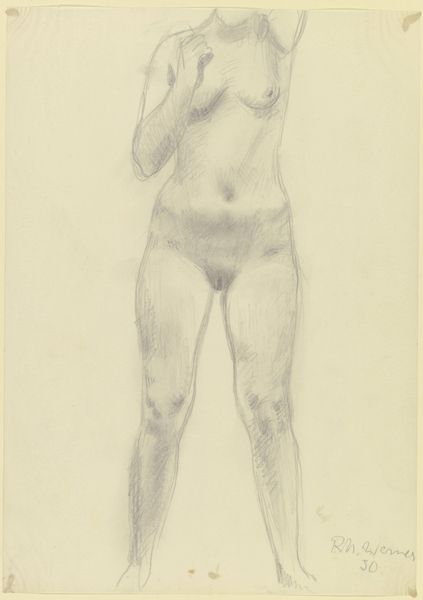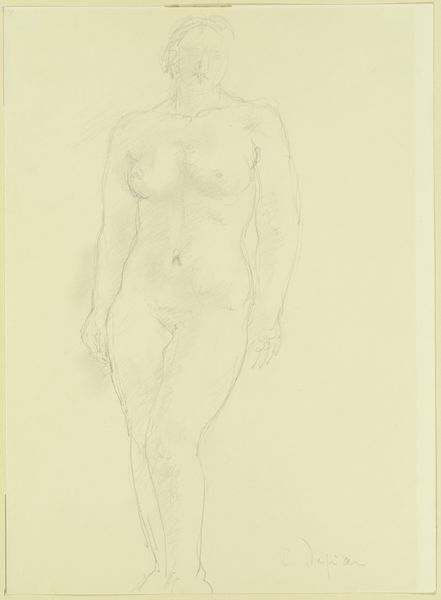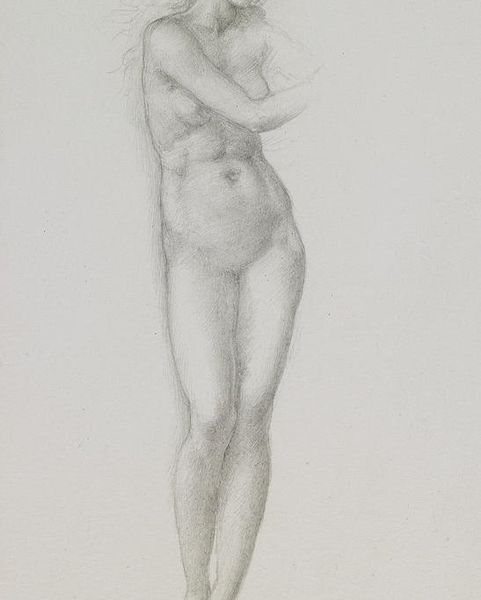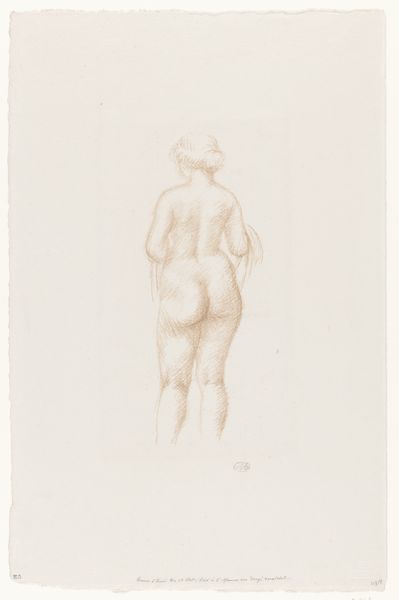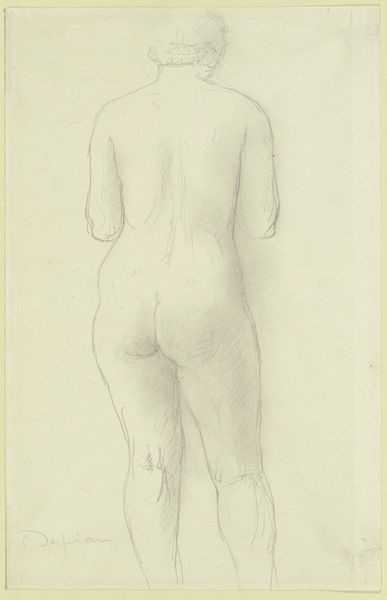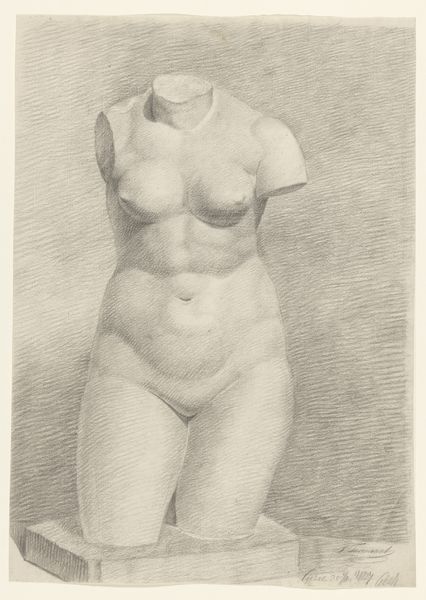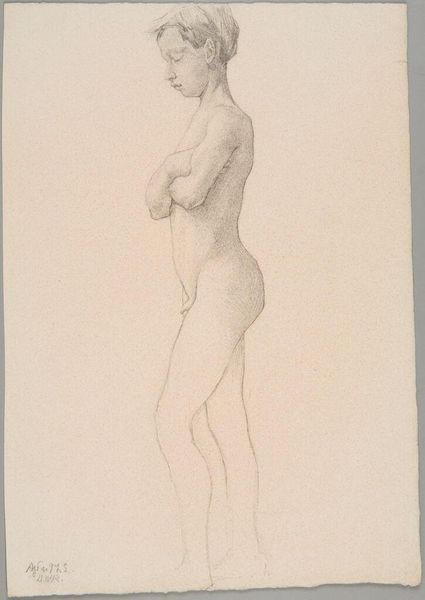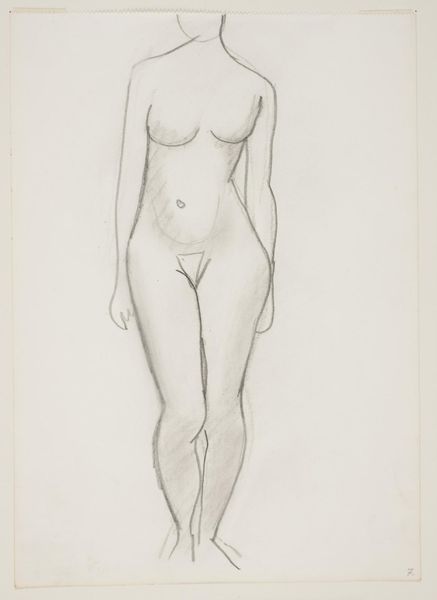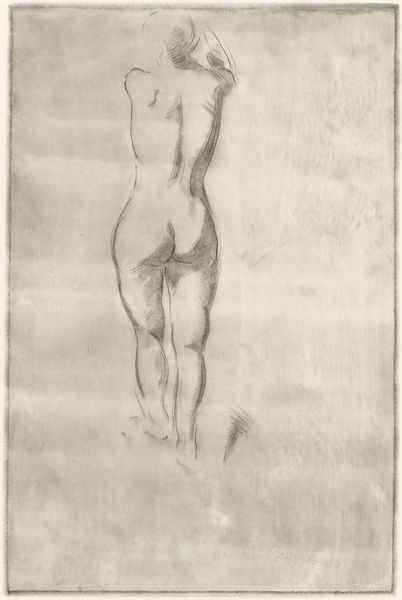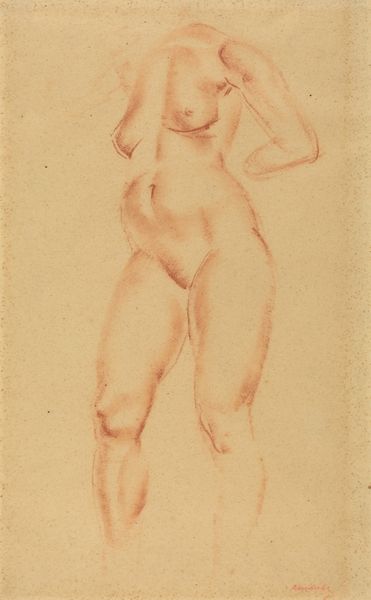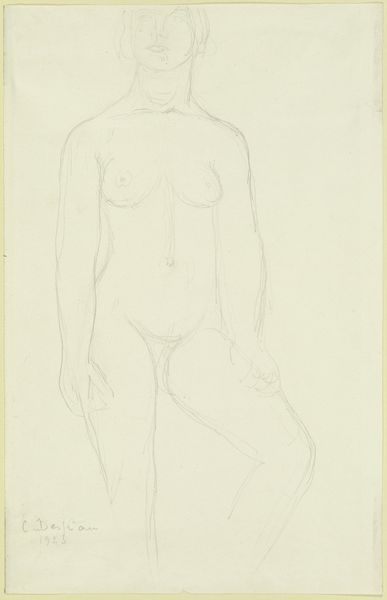
drawing, pencil
#
drawing
#
pencil sketch
#
charcoal drawing
#
figuration
#
form
#
romanticism
#
pencil
#
pre-raphaelites
#
academic-art
#
nude
Dimensions: overall: 25.2 x 17.8 cm (9 15/16 x 7 in.)
Copyright: National Gallery of Art: CC0 1.0
Curator: I'm immediately struck by the ethereality of this sketch; the softness of the lines and the way the figure almost seems to dissolve into the white paper. Editor: Indeed, and the figure depicted here by Edward Burne-Jones is Venus, rendered in pencil and charcoal. Although undated, it firmly places itself within the aesthetic preoccupations of the Pre-Raphaelite movement and the artist’s broader body of work. Curator: Pre-Raphaelite indeed! There is a deliberate reclamation of idealized feminine forms, isn't there? Looking back at representations of Venus in art history, and then examining Burne-Jones’s sketch, it almost feels like a conscious distancing from a more patriarchal gaze. Her gaze is inward, melancholic. Editor: Note how the subtle gradations in tone give volume to the figure. There’s an acute attention to the contours of the body; see the delicacy with which the lines render her chest, the abdomen, the turn of her thighs. Semiotically, the lightness reinforces her mythical, almost unattainable, nature. Curator: And this emphasis on form cannot be divorced from the politics of representation. Considering Burne-Jones's social circles, with figures like William Morris championing socialist ideals, the representation of the female body is also interesting in connection to emerging dialogues about labour, class, and gender. The way Venus, in this depiction, seemingly transcends such earthly concerns... it is striking! Editor: Transcends perhaps, yet it remains tethered to formal elements: line, light, composition. Look again at the curve of her neck, mirroring the soft slope of her shoulder; or how her pose, however gentle, fills the frame, creating a visual balance despite its simplicity. Curator: True. The lines communicate so much more than just form. They imply a history of artistic engagement with ideas surrounding beauty, sexuality and power that extends far beyond Burne-Jones and speaks to enduring societal dialogues. Editor: I find myself drawn to its graphic essence. A preliminary work perhaps, but undeniably powerful. Curator: An aesthetic object, of its time, yet one that urges us to confront enduring issues within both art and society.
Comments
No comments
Be the first to comment and join the conversation on the ultimate creative platform.
